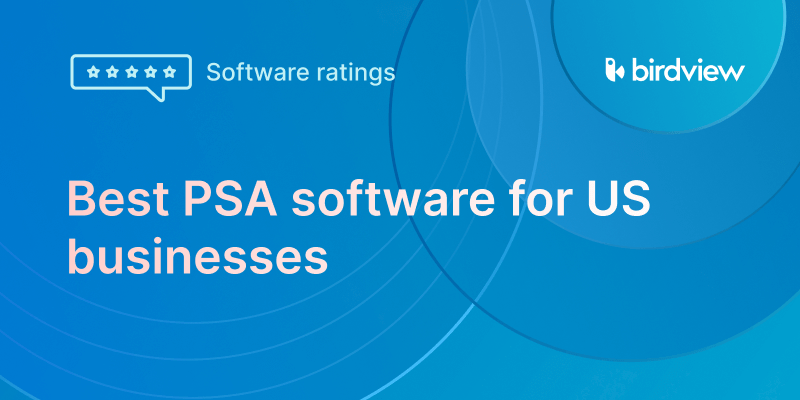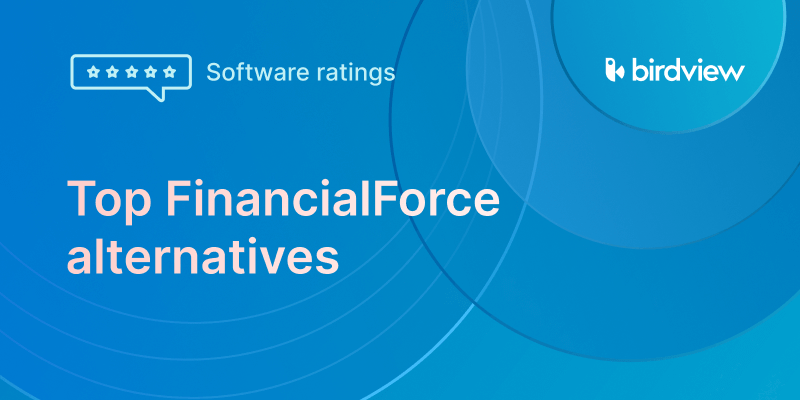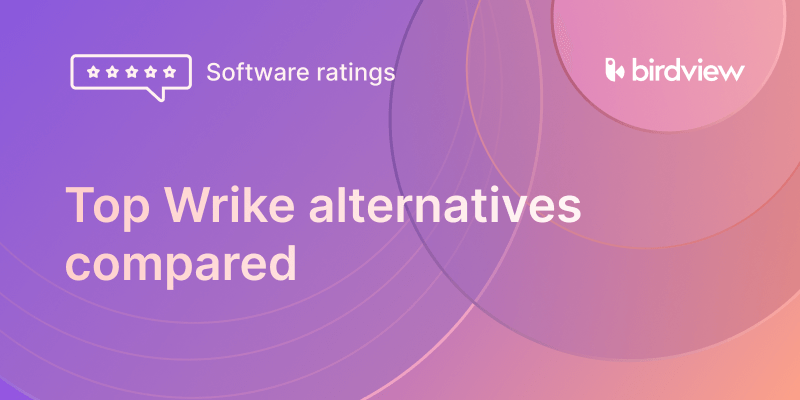“Portfolio management isn‘t something you ‘do,‘ it‘s something you are.” – Andy Jordan, President, Roffensian Consulting, Inc.
Project portfolio optimization (PPO) is the combined implementation of a set of technologies (namely, online project management software) and methodologies to aid an organization in understanding its project budgets, and portfolio prioritization, and assist executives in determining which projects should be green-lit and which should be scrapped.
But, why do you even need Project Portfolio Optimization for your company in the first place?
If you are a large-scale organization, you are likely working on multiple projects at once, and projects can range from simply designing a new company logo to product development or modifying a product to meet shifts in customer preferences.
Because this is all happening at once, a cleaner flow of organizational performance and enhanced efficiency, PPO project management, is necessary for planning, developing, executing, and reviewing the value of past, present, and future tasks.
What is the end goal of your organization? To deliver products that your customers desire, and attract new clients to enlist the services or products you provide. BIRDVIEW PSA: PROJECT PORTFOLIO MANAGEMENT SOFTWARE aids your company in achieving these every step of the way.
PPO is essentially the right way to do things the right way. That may sound kind of meta, but PPO is the practice of organizing and streamlining the way that your organization can achieve tasks that bring real operational results.
For organizations that have limited budget resources, PPO is vital for ensuring that projects do not exceed their budgets, are executed on schedule, and that risks are mitigated during execution. PPO is typically comprehensive in scale and is less so a single operational program, but more so an entire company approach to project management.
PPO enhances your organizational ability to organize data, and resources, and execute projects in a prioritized manner.
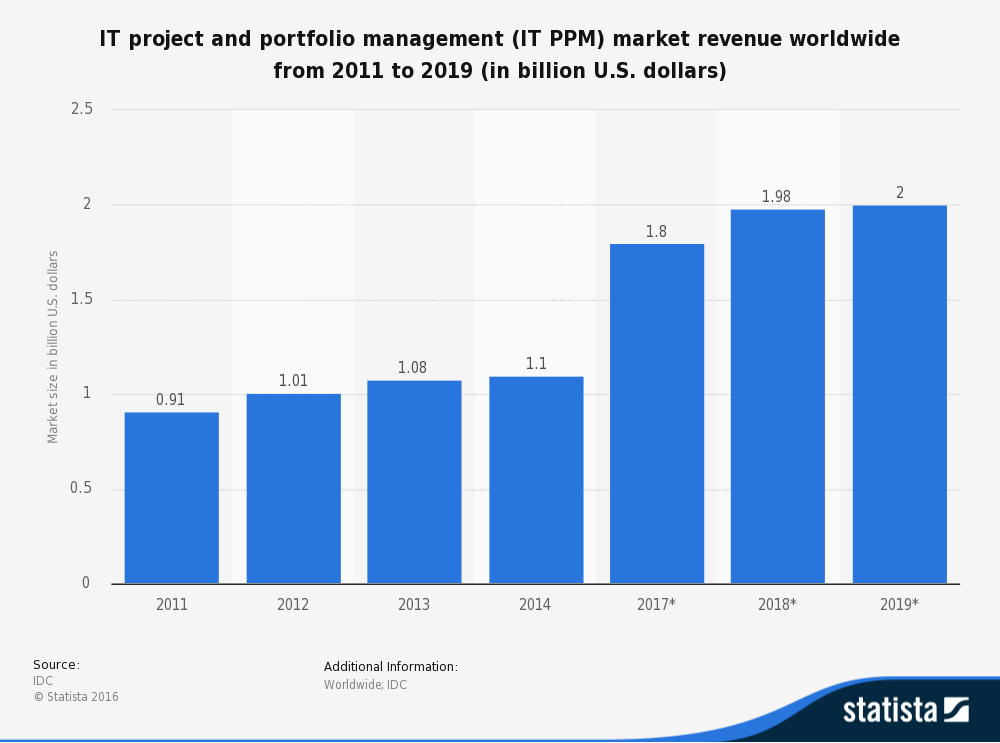
As seen above, the project portfolio optimization industry has quickly become a booming multi-billion dollar industry and is expected to double in scope in the. There are hundreds of cloud-based project management (PM) software available for organizations to choose from, each catered to fill a specific niche. Whichever vendor you choose to enlist, one fact remains the same for each and every PM software: your portfolio is not going to optimize itself.
While the technology is a powerful portfolio optimization tool, it is only just that: a tool. As the user, you need to develop a methodology to implement Project Portfolio in the most helpful way possible.
First, we will go over the four steps for setting and securing your portfolio budget and the following execution of project portfolio optimization. The four essential steps of PPO are:
1. Project planning/preparation
2. Project selection/deletion
3. Assessing and devoting resources
4. Final project execution
1. Project planning & preparation
The first step for the proper procedure of PPO is planning and preparation (did you enjoy the poetic alliteration?). Planning involves project prioritization and the beginning of the selection process, where project concepts are presented to the executives, and they can gauge which projects to pounce upon, which to put on the back burner, and which to abandon.
Planning is the beginning of the project budget determination. Project data should be properly archived and updated on a consistent basis so that executives can make budget allocations based on accurate, current data. There should be a detailed body of content regarding the aim of the project, its scope, and the history of similar project planning and execution.
For example, if a previous project along the same lines as one being planned was a success or a failure, the details should be included. This way, during the selection phase, executives can make an informed decision as to whether or not a project will move along smoothly, or will require greater preparation than another project. Including these details during the project, planning will enhance the overall efficiency of the organization. Time spent during planning saves time on selection and execution.
In addition to including all of the project details in one location, the integrity and reliability of the information should be guaranteed. Accurate, comprehensive project details will assist executives in assigning value to projects and then determining the project budget.

2. Project selection
Following the planning stage, each project should be assigned a value, which determines not only its priority but also whether you need to send your team back to the drawing board and perform project revisions.
Say that your portfolio has a budget of $1,000,000, and you have five projects. By evaluating projects and assigning values, you can swiftly determine which projects should have the most funding and are essential to building your organization. There are five factors that should be accounted for when assessing the overall value of each project:
1. Cleverness of the project strategy. Whether or not the project is utilizing a novel approach to achieving your company‘s intent, solving past problems, or if the project has been planned to implement a tried and true company method, etc.
2. Projected financial investment and projected timeline to reach the project goal.
3. Availability of technology to propel project success, whether you have the technology on-premise or need to source it.
4. Level of project risks to the company‘s benefit.
5. Current market climate; whether or not there are external factors that will hinder project success.
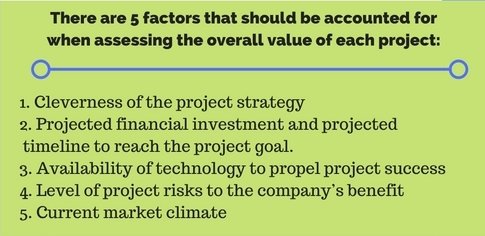
The project selection phase is where you really get into the nitty-gritty of project prioritization. During this stage, executives begin to balance which projects are deserving of how much of the portfolio‘s budget, and how many team members should be assigned to each project.
Also, once all of the portfolio‘s projects are collected and stored in a single database, it is easier to determine whether there are any redundancies in project goals and design. There should be a PPO specialist on your team assigned to review each project and assess whether or not there are any projects overlapping with one another. There are two approaches to take if redundancies are discovered, depending on severity:
1. Highlighting the redundancy, and sending it back to the planning stage to streamline the project‘s aim.
2. Scrapping the project in its entirety if another project already will tackle the entire scope of the project.
Once you have collected, reviewed, and selected which projects are top priority, you are ready to move to the next stage: resource allocation and devotion.
3. Resource allocation and devotion
This step is the most crucial phase of PPO. Here is when you are taking your biggest leap, and require thorough attention to detail. There are four project resources that need to be assessed, managed, and sometimes bought or hired:
1. Project personnel
2. Available finances
3. Physical supplies and/or software
4. Time
Your eternal organizational goal is to accomplish the greatest revenue while using the least possible resources. When budgeting time and money for your portfolio, executives must find a balance between the required personnel to accomplish the project in the least possible time, without devoting too many personnel to a project that could be instead assisting with the execution of a separate project.
When using PM software, and after determining and devoting resources to prioritized projects, you should have a model that looks similar to this:
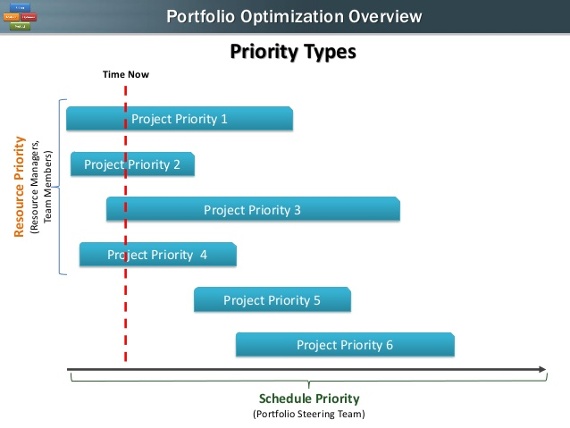
(source: http://www.slideshare.net/ppmexecution/portfolio-optimization-overview)
During this step, the team will evaluate if there are new technologies that can facilitate a project‘s ROI for the company, or whether the resources on hand are sufficient to accomplish tasks in a suitable timeline.
This is where project management software truly shines for PPO. When resources are cataloged in one place, everyone is on board with each other. For example, executives and project managers can observe how quickly a team member finishes a project and then assign them the next priority task.
Or, if new technologies are needed to be purchased for a team, the line of communication is open for each member to inform the purchasing personnel, who in turn has access to the accounting department‘s budget. Because communication is happening across the board in real-time, executives can more quickly make crucial decisions to accelerate project completion.
4. Final project execution
Once the portfolio has been prioritized and resources have been allocated and devoted to each priority project, the executive will authorize the execution of each selected project. But, you are probably asking yourself, “How can I effectively execute my project‘s implementation?”
We can give you six items of advice on how to do so.
First, ease off of the reigns a bit. By that, we mean that often executives want to be in control of everything in their organization. Staying in control, however, is vastly different than micromanagement, which will frustrate your team.
You hired your team (hopefully) because they are specialists; experts in their fields. Let them be the ones to make suggestions and determine which are the best tools that should be used for each project. You may be an executive because you are great at running a company and communicating a vision, but perhaps you are not a marketing expert or seasoned graphic designer.
Second, remain flexible to suggestions and supportive during challenges. As a project moves along, your team members will make suggestions regarding the practical approach to their tasks. Again, they likely know more than you in their particular field, so their suggestions should carry weight.
Also, during a trial time for a team member, support them verbally. Let them know that they got this, and will continue to do excellent work once they figure out the solution to the problem.
Third, find a communication method that works for your entire project team. Every organization will have different communication needs, and failed communication will doom a project‘s timely execution. Perhaps a scrum-style morning meeting is the most effective way to communicate project objectives, developments, and challenges, or maybe a weekly review. Whatever you decide, it is vital that team members communicate during execution.
Fourth, have contingency measures in place, and leave room for adjustment. Things happen. Whether it is an on-site hardware failure, an illness that strikes a team member, or any other conceivable complication, be ready to adapt your project‘s execution and have fail-safes in place. Neglecting to have contingency measures for your projects will collapse your execution of meeting deadlines.
Fifth, as a continuation of the fourth piece of advice, keep your eyes open. This means that while overseeing the execution of your projects, be aware of potential threats, but also potential opportunities to improve a project. Communicate this to your project managers and team members.
What if there is a new technology that can accelerate your project performance? Or, what if there are market trends happening that negatively impact your project‘s relevance? Keeping your ear to the ground will save you from potential threats or opportunities during execution.
Sixth, encourage your project team to relax and have fun. Let‘s face it, not every project is going to be exciting and inherently engaging for your project team. Some projects will be executed over the course of several years, even decades. The last thing that a project manager wants to hear is that a team member has become burned out and is abandoning ship, crippling project progress.
A successful leader knows how to keep their team motivated and dedicated to the organization. Make certain that your project managers are passing down the line an emphasis on having fun during execution, so when problems do arise, your team will look for a solution rather than pulling out their hair.

Birdview PSA for you
Now that you have an understanding of the four essential steps of PPO, incorporate these methodologies into your next project. Also, pay attention that each step is seen through to completion before devoting energy to the following step. Any neglect along the way will muddy your PPO and thwart efficiency and project success. We wish you luck and hope that you exploit the power of PPO to its fullest potential.

